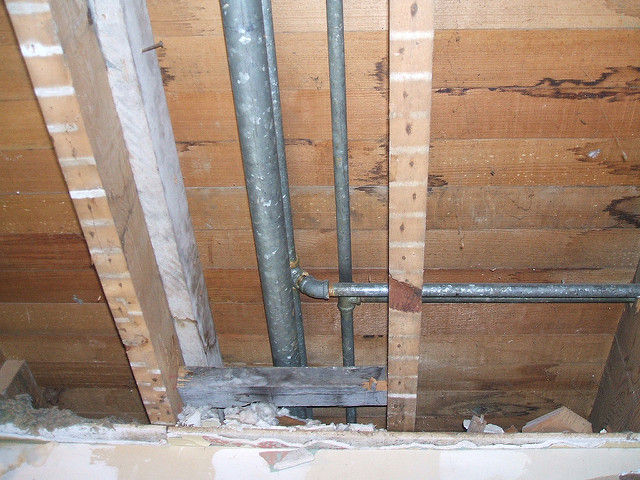Exactly how to Inspect If Your Residence Has a Hidden Leak
Exactly how to Inspect If Your Residence Has a Hidden Leak
Blog Article
What are your thoughts and feelings about Leaking water lines?

Early discovery of leaking water lines can alleviate a possible calamity. Apart from saving you cash, it will reduce the irritation as well as disappointment. The minute you discover a leak, calling your plumber for repair services is the most effective remedy. Nevertheless, some small water leaks may not be visible. Below are some hacks that aid if you can not identify it with your naked eyes.
1. Analyze the Water Meter
Checking it is a proven method that helps you uncover leaks. If it relocates, that suggests a fast-moving leak. This indicates you may have a slow-moving leak that can also be below ground.
2. Check Water Intake
If you detect abrupt modifications, despite your intake being the very same, it indicates that you have leaks in your plumbing system. A sudden spike in your bill indicates a fast-moving leakage.
Meanwhile, a consistent boost monthly, even with the exact same routines, shows you have a slow leakage that's likewise slowly rising. Call a plumber to extensively examine your building, particularly if you feel a warm location on your flooring with piping below.
3. Do a Food Coloring Test
When it comes to water consumption, 30% comes from toilets. If the color somehow infiltrates your dish throughout that time without flushing, there's a leak between the container and bowl.
4. Asses Outside Lines
Don't forget to inspect your exterior water lines too. Test faucets by connecting a garden tube. Should water permeate out of the connection, you have a loosened rubber gasket. Replace this as well as ensure all connections are limited. It will help get it professionally examined and also preserved each year if you've got a sprinkler system. One little leak can throw away lots of water and increase your water expense.
5. Assess the circumstance as well as examine
Homeowners should make it a routine to check under the sink counters and even inside cupboards for any kind of bad odor or mold and mildew development. These 2 warnings show a leakage so punctual focus is called for. Doing regular assessments, even bi-annually, can conserve you from a major trouble.
A lot more notably, if you know your house is currently old, maintain a watchful eye on your heating units, hose pipes, pipelines and so on. Check for stainings and compromising as most home appliances and pipes have a life span. They will certainly additionally normally degrade because of tear as well as use. If you think dripping water lines in your plumbing system, do not wait on it to intensify. Call a specialist plumber immediately so you don't end up with a terrible mess in your home.
Early detection of leaking water lines can minimize a potential calamity. Some tiny water leakages may not be visible. Checking it is a proven way that assists you find leaks. One small leak can throw away bunches of water and also increase your water costs.
If you think dripping water lines in your plumbing system, do not wait for it to rise.
WARNING SIGNS OF WATER LEAKAGE BEHIND THE WALL
PERSISTENT MUSTY ODORS
As water slowly drips from a leaky pipe inside the wall, flooring and sheetrock stay damp and develop an odor similar to wet cardboard. It generates a musty smell that can help you find hidden leaks.
MOLD IN UNUSUAL AREAS
Mold usually grows in wet areas like kitchens, baths and laundry rooms. If you spot the stuff on walls or baseboards in other rooms of the house, it’s a good indicator of undetected water leaks.
STAINS THAT GROW
When mold thrives around a leaky pipe, it sometimes takes hold on the inside surface of the affected wall. A growing stain on otherwise clean sheetrock is often your sign of a hidden plumbing problem.
PEELING OR BUBBLING WALLPAPER / PAINT
This clue is easy to miss in rooms that don’t get much use. When you see wallpaper separating along seams or paint bubbling or flaking off the wall, blame sheetrock that stays wet because of an undetected leak.
BUCKLED CEILINGS AND STAINED FLOORS
If ceilings or floors in bathrooms, kitchens or laundry areas develop structural problems, don’t rule out constant damp inside the walls. Wet sheetrock can affect adjacent framing, flooring and ceilings.
https://www.servicemasterbyzaba.com/blog/how-to-detect-water-leakage-in-walls/

As an avid person who reads on Leaking water lines, I imagined sharing that excerpt was beneficial. If you enjoyed our blog post if you please do not forget to share it. Thank you for taking the time to read it.
Report this page